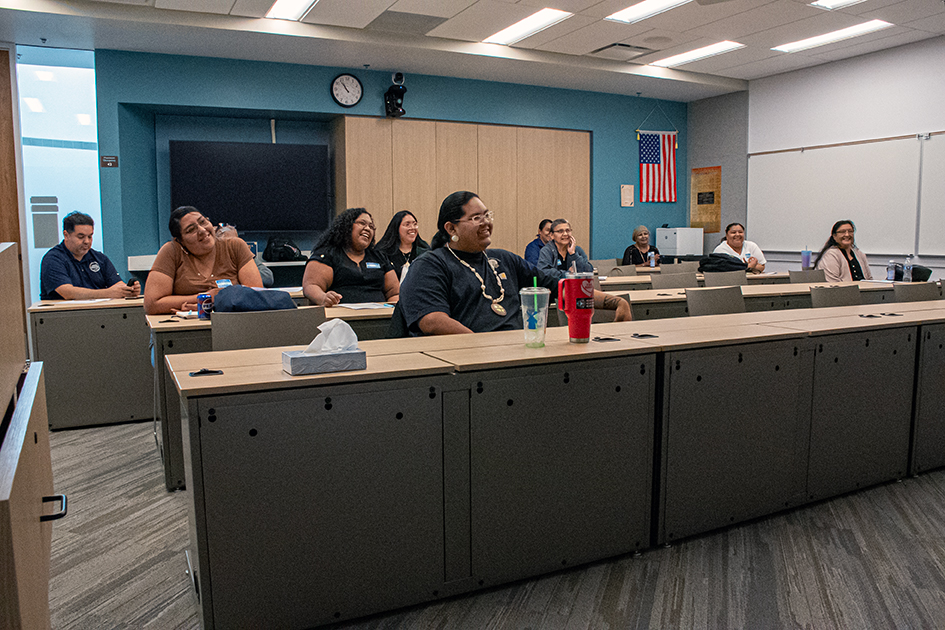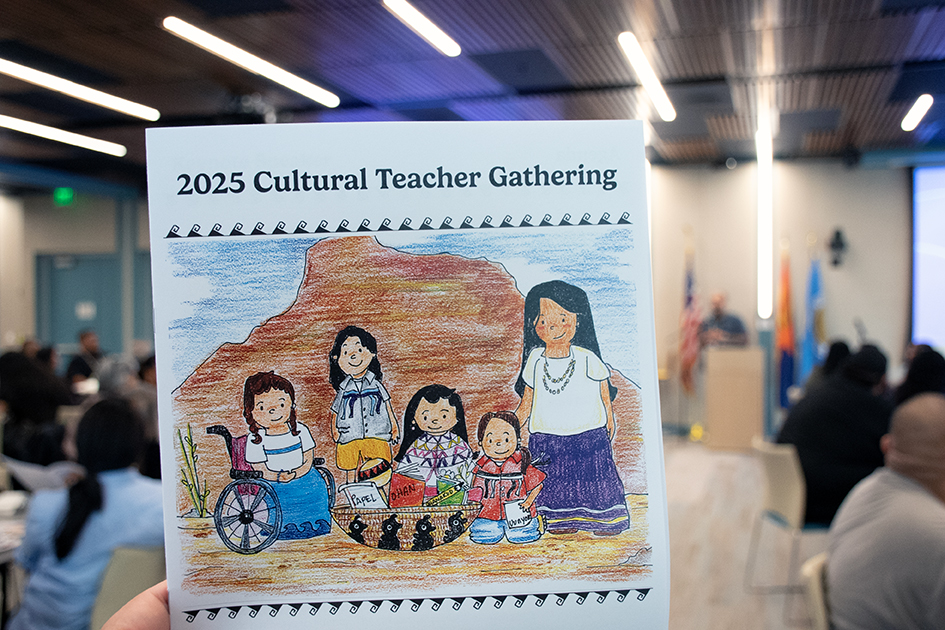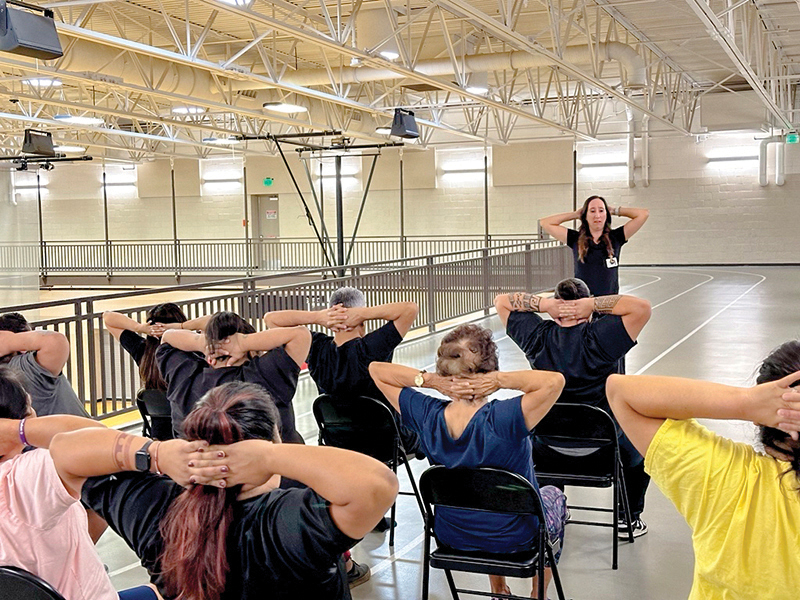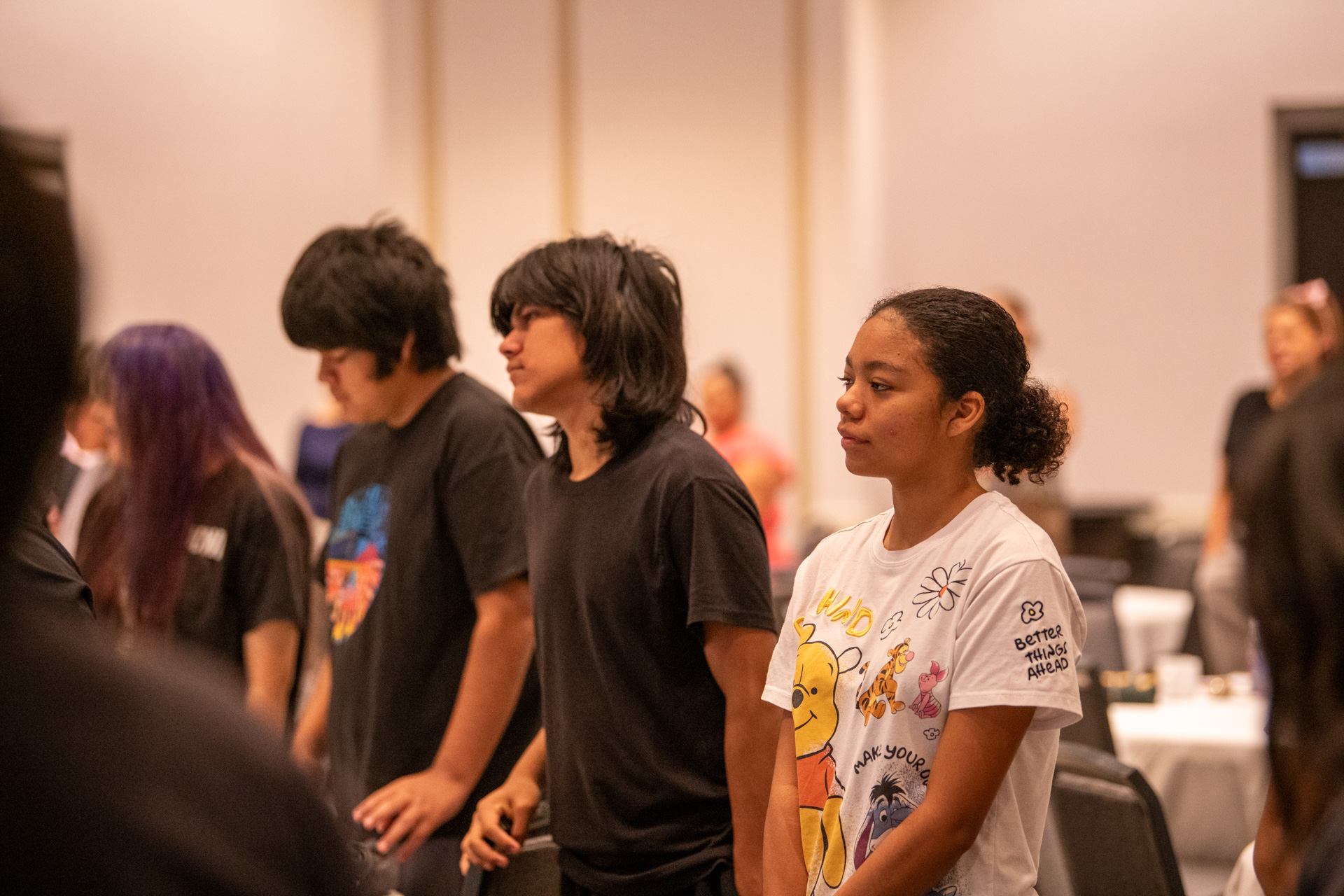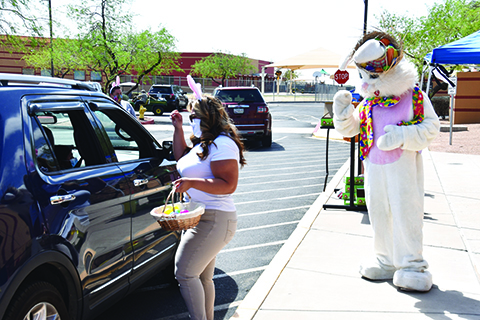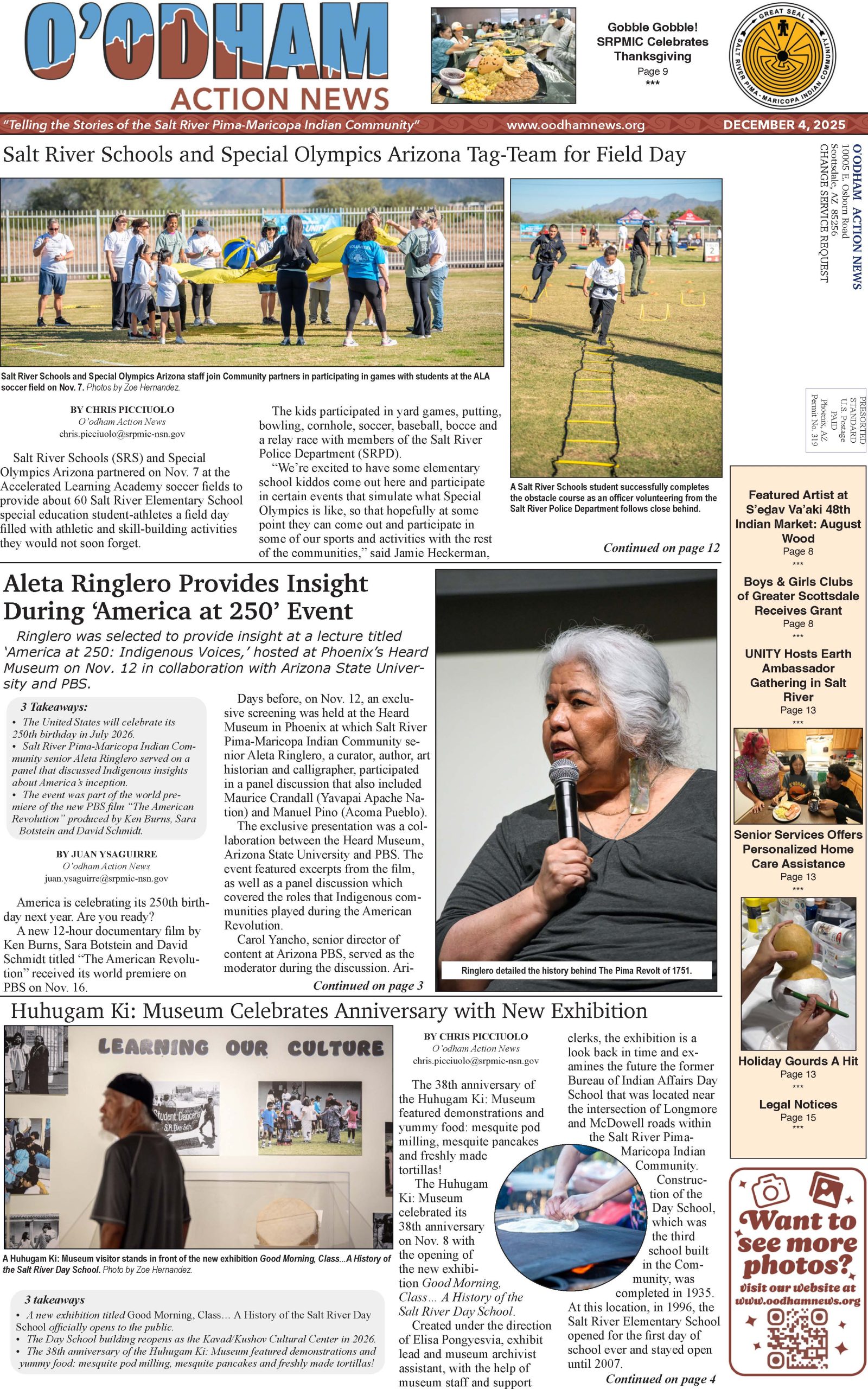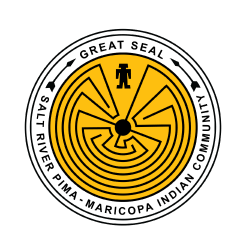VIEWS: 634
October 3, 2025Culture Teacher Gathering 2025
In O’odham, we say ske:g taṣ for “good day.” To say good, we say sape, or in Piipaash xotk. At the Culture Teacher Gathering, it was sape all around. Jokes and he’hem (laughing) were present from everyone in the room. Everyone at the gathering was sekik (happy) to be there and had a story to tell.
The gathering took place in Vaṣai Gakidag Maṣad (Dry Grass Month) on Sept. 5 in the Indigenous Cultural Center at Scottsdale Community College. It was hosted by the Salt River Pima-Maricopa Indian Community’s Cultural Resources Department (CRD) and the Salt River Schools Education Native Language & Culture Team. Attending the event were O’odham teachers from the gi’ik (four) sibling tribes: the SRPMIC, the Gila River Indian Community, the Tohono O’odham Nation and the Ak-Chin Indian Community.
The Salt River Education Board and the CRD wanted the gathering to be “something [where] we can come together and enjoy one another’s company, but at the same time gather important information and strategies that we can take back to our communities and share with our children, our families and our different communities,” said emcee and Education Native Culture Coordinator Ipa Dutchover.
The gathering began with a welcoming and prayer, along with chiyer (bird songs) and piipa (people songs) shared by CRD staff member Aarick Mack. The morning ceremonies were followed by a presentation from keynote speaker Jeremy Johns from the Ak-Chin Indian Community and then gi’ikbreakout sessions. The breakout sessions were O’odham focused and designed to promote the O’odham language. The gathering concluded with an O’odham cu:dk (socials) and giveaway.
Dutchover explained the significance of revitalizing the two languages and cultures within the SRPMIC, since the gathering took place within the SRPMIC boundaries.
“We represent two different tribes in one community here in Salt River, the Onk Akimel O’odham and the Xalychidom Piipaash. We’re very thankful that our Community and our Council [support our efforts]. We [also] heard from our Education Board that they support our efforts in revitalizing our language, and we’re not just doing it for one, [we’re] doing it for both,” said Dutchover.
He also expressed how important and special it is to bring light to both languages and cultures. “Were working very hard to bring quality and notability to both languages and both cultures within our communities and within our schools, and we know how hard it is to teach one language. We’re really trying our best to teach and give the opportunity for both languages and cultures to be showcased within our Community,” said Dutchover.
Within Salt River and its sibling tribes, language and culture teachers are working with individuals who may be fluent in O’odham as well as individuals who are new to the language and rely on fluent speakers.
According to Johns, O’odham is referred to as an endangered language. He noted, “O’odham is going through a language shift at the moment, and it isn’t learned as a first language by everyone in the Community anymore as it once was.” A language shift is described as a community of people shifting from one language to another over time. “For O’odham communities in the U.S., we are slowly shifting from O’odham to English,” said Johns.
Johns focused his presentation on heritage learners. “A heritage learner is anyone inside our Community who is learning the language spoken by the people and the culture that they come from. For us, this means our Community members, whether they live on or off the reservation,” said Johns. For some heritage learners, the process becomes difficult because they say people will get mad or laugh at them if they make errors. Johns says, “Half the battle of learning a language is deciding that you actually want to learn [the language] and put the effort into learning it.”
He believes one of the most important factors for language learning is continuous exposure. “You need to hear it as much as possible. You need as many people who know the language talking to you as possible, and [it’s important] for you to answer them in the language.”
“Heritage learners will be our next teachers,” said Johns.
By da:m ju:k (noon), the phrase heñ navoc (my friend) was heard throughout the gathering. The Culture Teacher Gathering 2025 became not just a place of learning, but a place of friendship.
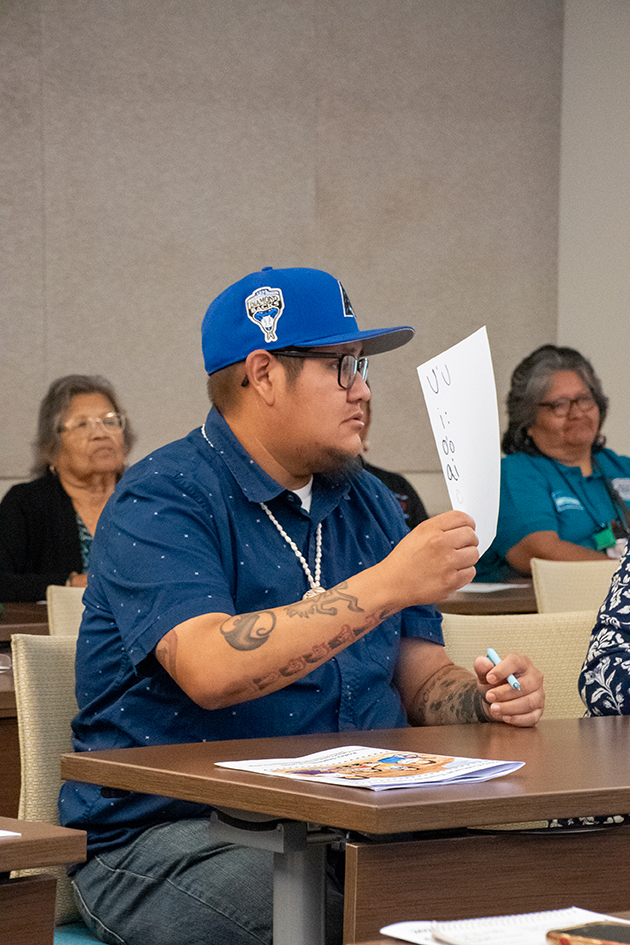
remembering the sounds and spelling of the
O’odham alphabet.
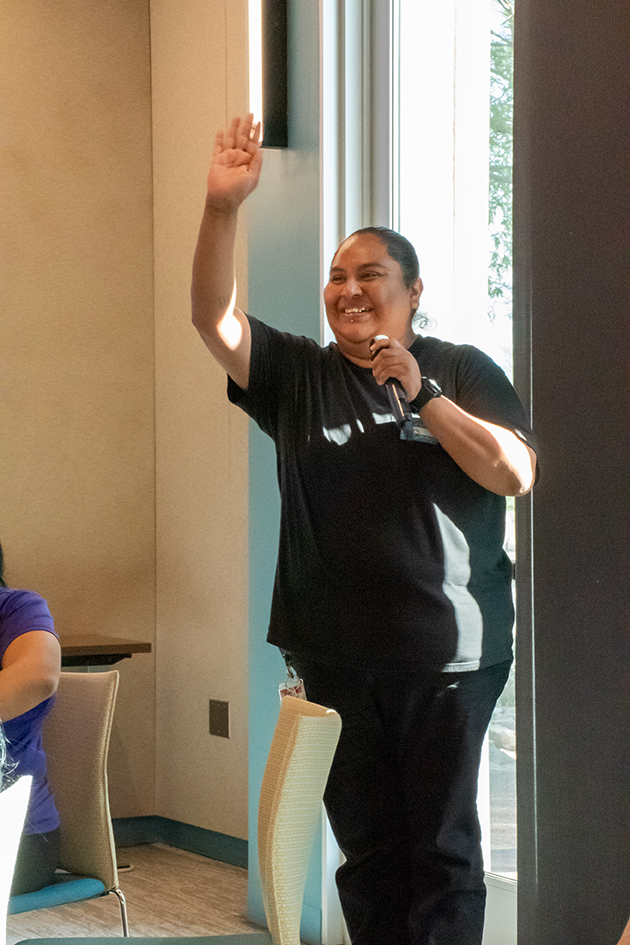
participates in bonding exercise, The
Culture Teacher Royalty Pageant.
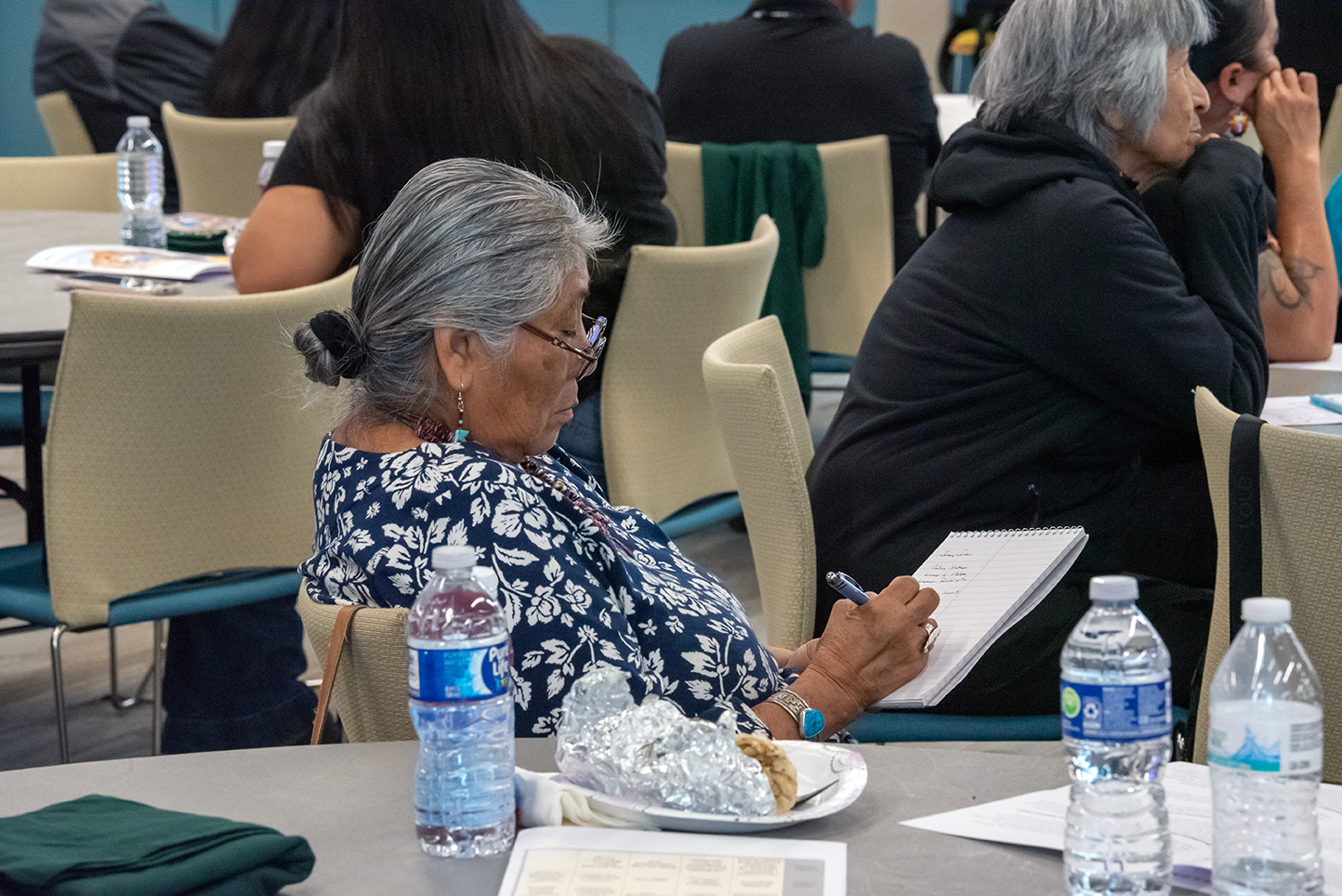
presentation.
